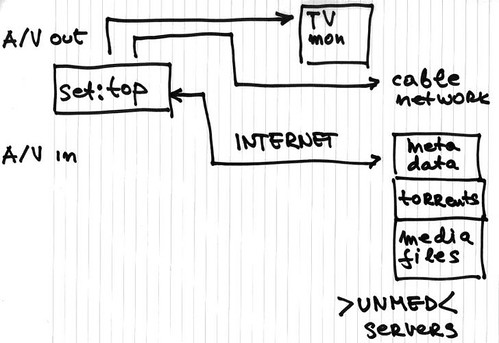Open Source Market: OpenLogic’s CEO unveils new trends
Steven L. Grandchamp, OpenLogic’s CEO, has wrote an insightful article entitled “The Evolution of Open Source” (require membership), explaining that there are many sourcing and selection issues and how this market is evolving.
Support can be particularly vexing, with companies juggling support contracts with dozens of different commercial open source companies or trying to tackle problems internally without the proper expertise, either one a risky and time-consuming proposition.[..]
The open source service companies can assume many forms: One form is the stack supplier, and others include the support provider, systems integrator, consultant, software developer, and a combination of all of the above. Among the newcomers are Virtuas, BitRock, SpikeSource, and OpenLogic[ the author’s company], but the larger, traditional IT players are also beginning to take notice and build practices in this area.
 Trends by farfalina
Trends by farfalina
I would also add open source consulting firms like Navica and Optaros, just to name two of.
While the size and substance of the service companies differ, all share a common philosophy: each eschews the typical model for the commercialization of open source. Rather than latch onto one, particular open source product with a big installed base and monetize it with subscriptions, support contracts, and consulting, each company provides solutions that extend across many open source products. Each supplier traffics in expertise about how to use open source in concert with software downloaded, purchased, or developed internally.[..]
The real opportunity for growth is in demystifying the use of open source. Those third-party, open source firms that focus on helping enterprises develop policies, pick projects, and manage deployments are the ones most likely to succeed and excel.
I would rather say that “horizontal” business models are new – compared to the “old” vertical ones – not sure they are more likely to succeed, though.
Those firms are all taking advantage of the absence of a Corporate actor:
- Consulting, because (almost) no one is marketing OS products;
. - Selling quality assurance, because (almost) no one is tracking the production process;;
. - Building Stacks and Benchmarking, because (almost) no one develop partnership programs;
. - Mediation, because (most of) open source projects lack of commercial support;
. - Offering indemnification and IP coverage, etc.
OpenLogic is an open source consulting firm based in Colorado, has just added sixty new open source to its Certified Library, also releasing a new version of its Enterprise 4.4, with added also Open Source Governance functionalities designed to help enterprises.

 Shift Freedom by
Shift Freedom by  Blueprint by
Blueprint by 
 Against software patent by
Against software patent by  Forging by
Forging by 
 set Top box Diagram by
set Top box Diagram by 
Reply